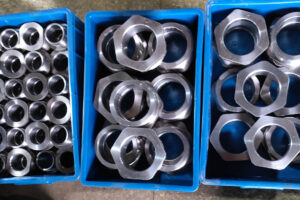Water Glass Investment Casting: A Comprehensive Overview
 Waterglass Casting, also known as Sodium Silicate Casting, is a widely used investment casting process in China. It gets its name from the additive, sodium silicate, which acts as a binder within the ceramic casting shell.
Waterglass Casting, also known as Sodium Silicate Casting, is a widely used investment casting process in China. It gets its name from the additive, sodium silicate, which acts as a binder within the ceramic casting shell.
The history of sodium silicate dates back to the 1600s when it was first developed. Over time, it has found numerous applications in various industries. The Waterglass Casting technique originated in Russia and has gained popularity in China, with approximately 75% of foundries using this process.
To create the ceramic shell mold in Waterglass Casting, a mixture of sodium silicate and sand is combined to form a ceramic slurry. This slurry is then used to coat the desired pattern or model. The shell is subjected to high-temperature firing, causing the ceramic elements to sinter and bond together. The result is a robust and high-strength shell capable of withstanding the molten metal charge during the casting process.
Waterglass Casting offers several advantages. The sodium silicate binder provides good refractory properties, ensuring the shell can withstand the heat generated by the molten metal. Additionally, this casting process allows for intricate and complex designs, making it suitable for producing detailed components. Furthermore, the use of readily available sand and sodium silicate makes Waterglass Casting a cost-effective choice for manufacturers.
Waterglass Casting, or Sodium Silicate Casting, is a prevalent investment casting method in China. Its utilization of sodium silicate as a binder in the ceramic shell mold, along with its ability to produce intricate designs, makes it a favored choice in the foundry industry.
1. Materials:
Water glass casting supports a wide array of materials, offering flexibility for diverse applications. The following materials are commonly used:
– Carbon steel
– Alloy steel
– Stainless steel
– Cast iron
– Aluminum alloy
– Copper alloy
2. Finishing Techniques:
To meet specific requirements and enhance the visual appeal of castings, various finishing techniques are employed. These include:
– Shot/sand blast
– Polishing
– Surface passivation
– Painting
– Powder coating
– E-Coating
– Chromate plating
– Zinc-plating
– Dacromat coating
3. Water Glass Investment Casting Tolerances:
General casting tolerances for water glass investment casting typically fall within the range of CT4 to CT8, ensuring accurate and consistent dimensions. Furthermore, ultimate machining tolerance can be achieved at an impressive 0.005mm, enabling high-precision components.
4. Weight Range:
Water glass casting accommodates a vast weight range, spanning from 0.1 kgs to 100 kgs. This versatile capability allows manufacturers to cater to a broad spectrum of project requirements.
5. Casting Size:
The size limitations for water glass casting are as follows:
– Maximum linear size: 1200mm
– Maximum diameter size: 600mm
6. Professional Manufacturing in China:
As a renowned manufacturer in China, we pride ourselves on our expertise and commitment to delivering exceptional products. With a team of skilled professionals and state-of-the-art facilities, we strive to provide high-quality water glass investment castings that meet and exceed customer expectations.
7. Water Glass Investment Casting Manufacturing Process:
The water glass casting process involves the following sequential steps:
– Process design: Determining the casting requirements and specifications.
– Tooling making: Designing and manufacturing molds required for the casting process.
– Wax injection: Injecting molten wax into the molds to create wax patterns.
– Wax pattern assembly: Assembling multiple wax patterns onto a central wax gating system.
– Mold preheat: Heating the assembled wax pattern to remove any residual moisture.
– Wax removal: Melting out the wax from the molds to obtain mold cavities.
– Stuccoing: Coating the mold cavities with a ceramic slurry to create the shell.
– Dipping casting: Repeating the stuccoing process several times to achieve desired shell thickness.
– Mold shake out: Removing the shells from the molds through mechanical or vibration methods.
– Work piece cut-off: Separating individual castings from the gating system.
– Grinding: Removing excess material and refining the surface finish of the castings.
– Pack & transport: Preparing the castings for transportation to the subsequent production stages.
Water Glass Investment Casting Conclusion:
It is a versatile and precise manufacturing process suitable for a wide range of applications. By leveraging a variety of materials, employing different finishing techniques, adhering to casting tolerances, and accommodating varying weight and size requirements, water glass investment casting allows manufacturers to produce intricate and high-quality metal components. As a reliable manufacturer in China, we are committed to providing top-notch water glass investment castings that meet the most demanding standards.
